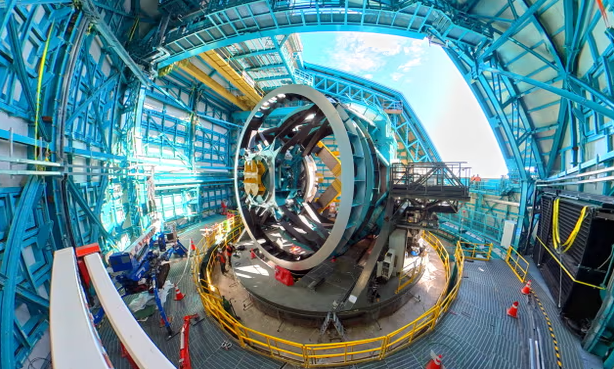
For over 60 years, scientists have continuously failed to find any definitive evidence supporting the existence of extraterrestrial intelligent beings, making it one of the longest streaks of negative results in the field of science. Despite numerous attempts, researchers have not been able to establish any form of communication with potential alien civilizations.
Researchers believe that the search for extraterrestrial civilizations could be entering a new phase. Scientists at Breakthrough Listen, the largest research program dedicated to this goal, are excited about numerous advancements in technology that will greatly enhance the quest for intelligent life in the universe.
These new developments will be presented at the organization’s yearly gathering, taking place this week in Oxford, UK for the first time. It is anticipated that hundreds of scientists, ranging from astronomers to zoologists, will be in attendance.
Steve Croft, an astronomer and project scientist for Breakthrough Listen, commented that the advancements in technology, such as the building of large telescopes in various locations and progress in artificial intelligence, will revolutionize the search for extraterrestrial civilizations.
Two of the new instruments being developed are the Square Kilometre Array, a collection of radio telescopes under construction in South Africa and Australia, and the Vera Rubin Observatory currently being built in Chile. The Square Kilometre Array is set to become the most advanced radio astronomy facility in the world, while the Vera Rubin Observatory, equipped with the world’s largest camera, will have the capability to capture images of the entire visible sky every few nights and is anticipated to uncover numerous new galaxies and stars.
Both facilities are scheduled to begin observations in the coming years and will contribute data to Breakthrough Listen. Croft added that leveraging AI to analyze the extensive data for subtle patterns indicating signs of intelligent life will enhance the quest for alien civilizations.
Up until now, our search for signals from aliens has been limited to intentional transmissions. However, with new techniques, we will now be able to detect unintentional transmissions for the first time. This includes being able to identify alien airport radar or strong TV signals, among other things.
Astrophysicist Prof Adam Frank from the University of Rochester in New York emphasizes the significance of being able to identify civilizations through the signs of their everyday actions. In his new book, “The Little Book of Aliens,” he discusses the importance of searching for technosignatures, which are indications of an alien society’s daily activities, as a way to discover intelligent life that has the ability to build civilizations.
Various types of technosignatures have been proposed as potential indicators of the existence of extraterrestrial civilizations, such as artificial lighting and atmospheric pollution. Some experts have theorized that alien societies might be observable by the solar panels they create. Solar panels, which absorb visible light but reflect ultraviolet and infrared radiation, could be identified through advanced telescopic technology.
According to astrobiologist Lewis Dartnell, it would require extensive coverage of a planet’s surface with solar farms and numerous hours of observation in order to detect this phenomenon. This was stated in the most recent issue of the BBC’s Sky at Night magazine.
Alternative strategies used by aliens to harness solar energy may be even more complex and noticeable. Physicist Freeman Dyson suggested that advanced civilizations could potentially construct massive arrays of solar panels encircling their home stars. These structures, known as Dyson spheres, could be seen from Earth and there are some potential candidates, such as Boyajian’s star in the Cygnus constellation, which emits light intermittently and unpredictably. Some scientists speculated that this irregularity could be due to a Dyson sphere, but recent observations have disproved this theory.
The search for alien civilizations has been a central theme in blockbuster sci-fi movies like E.T., Contact, Arrival, and District 9. Despite efforts dating back to 1960, when astronomer Frank Drake used a 26-meter radio telescope to search for signals from the stars Tau Ceti and Epsilon Eridani, no extraterrestrial life forms have been discovered. This has remained the case, even with significant advancements in the technology and capabilities of modern telescopes.
Also Read: Introducing Len: The hacker who has 10 implants embedded in his body.
It is uncertain if the streak of negative results will continue. Croft is hopeful that we will soon achieve communication. “We are aware that life-supporting conditions and necessary ingredients are abundant.”
“I believe it would be very strange if we were the only planet with life in the galaxy or the universe. However, it is a possibility.”
